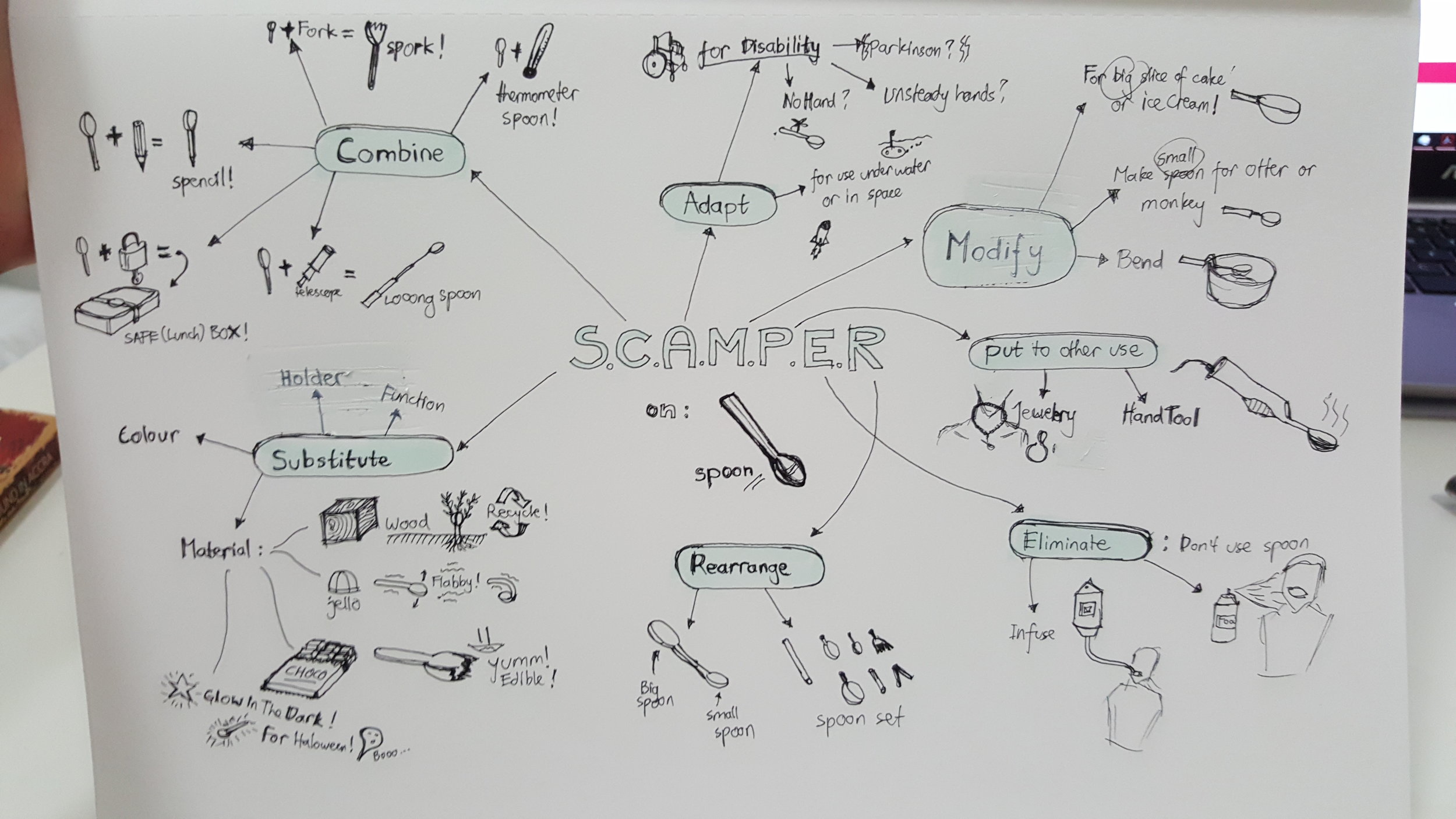Product design and development regarding a watertight container
Read More3D Printing for Home Users
The basics of 3D printing in product design and development
Read MoreProduct Design 101
Preparing to give a presentation on product design for a hackathon was the best opportunity to gain fresh perspectives on my basics.
Classic example on S.C.A.M.P.E.R. Diagram
I decided to open the presentation with a classic example of SCAMPER diagram of the design of a spoon. Design is an iterative process of idea generation and elimination. If brainstorming does the idea generation randomly by association, SCAMPER technique does it systematically. I proceeded to let the participants to get a taste of both before they dive into the hacking actions.
Stepping out of the freezing hacking space, I asked the participants to take notice that everything around us are designed. Some are designed well, some are not so.
It helped that the hacikng space is surrounded by whiteboards. Both the participants and the mentors were happy to fill them with ideas, good points, critics, and feedback notes. I love post-its so much!
This was my view when we are just starting. Empty white boards, sleepy people just waking up in the morning. Fresh starts!
We the mentors did a little bit of data analytics on the topics and the stages of the groups. if we didn't stop ourselves, probably we would have ourselves came up with an app to optimize this process.
Some of the creative works we did in the middle of our mentoring.
Connected Sensor Nodes with machines as the users.
Link: http://bit.ly/2oz7OZH
designing sensor-system for big machineries
How to design a sensor system for big machineries
Read MoreDesign Requirements
Designing, like a fluid, doesn’t flow in vacuum. Fluid behaves like how it is on earth due to a combination of gravitational force, pressure differences, temperature conditions and the shape of the earth rocks. Likewise, design needs a set of limits and rules to define its universe. Change the rules even a little, and the balance will be thrown off and we might not even live through to tell the difference.
If each design is analogized as creating a new universe, gathering the requirements is like defining its law of nature. There is no point in painting planet’s landscape if an added semicolon might wipe off the entire galaxy. I do not start designing until the requirement is set in stone, to emphasize how important the requirements are to a design.
My mentor once said, that understanding of the problem is one skill that differentiate good designers and the great ones. In my experience, a problem is unsolvable only because it is not understood properly. A completely deep and thorough understanding is like a fully defined river banks, which enables the design to flow so effortlessly to find the solutions at the end of the process.
Gathering the requirement is an art on its own, as the designer usually is not part of the universe that is to be created for the clients and their users. This is where the designer needs to have a far-reaching emphatical heart, paired with observant eyes to gather what would work for the clients and users. This is the core of user-centric design philosophy popularized by IDEO’s Tom Kelley. Personally, I think the understanding of the users should be done even before designing begins.
Requirement is also useful to separate the designed universe from the designer’s own preferences and styles, to ensure that the designer can create what is truly best regardless of his/her own personal choices. From this perspective, the act of designing is very similar to that of acting, where one needs to kill his own ego to fully take on the role of a hero, an assassin, a villain or even a demon. A very selfless profession albeit the highlight and glory given to the few celebrated ones.









